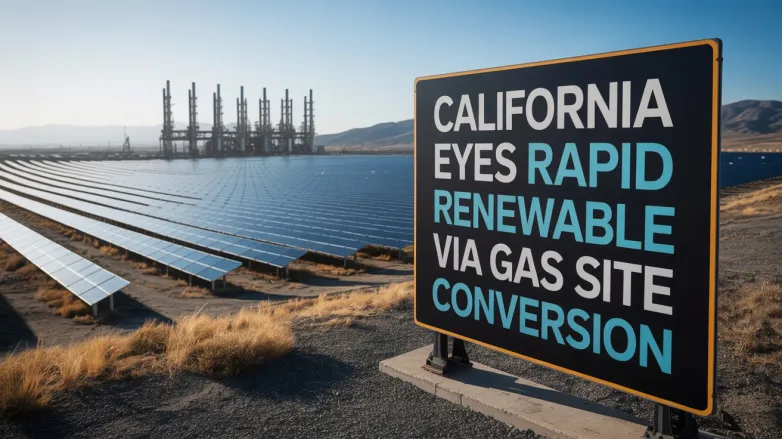California Eyes Rapid Renewable Boost via Gas Site Conversion
- Transform aging gas stations into solar-wind hubs, cutting emissions and costs while meeting California's clean energy goals.

California could rapidly add 23 GW of renewable energy by converting aging gas stations into solar-plus-wind plants, according to GridLab. The think-tank's model shows 31 GW of under-utilized transmission rights from existing thermal generators, enough to meet Senate Bill 100's 2030 clean power requirements. By integrating four-hour batteries, developers could bypass CAISO's congested interconnection queue and qualify for full federal Investment Tax Credits before 2027.
GridLab suggests a "fast-track" tariff allowing gas-plant owners to retain stakes or receive fees for releasing capacity, potentially saving $4 billion in grid-upgrade costs and reducing CO₂ emissions by 35 million tonnes by 2040. While some worry about air-quality issues, GridLab argues that most sites are in permitted industrial zones, simplifying permitting. The California Public Utilities Commission will discuss the proposal next month.
How can converting gas stations to solar-wind plants meet California's clean energy goals?
- Converting gas stations to solar-wind plants can significantly contribute to California's renewable energy targets by utilizing existing infrastructure and transmission rights, accelerating the transition to clean energy.
- This approach can help meet the requirements of Senate Bill 100, which mandates 100% clean energy by 2045, by adding substantial renewable capacity quickly and efficiently.
- By integrating solar and wind energy with battery storage, these converted sites can provide reliable, continuous power, addressing intermittency issues associated with renewable energy sources.
- The conversion can bypass the congested interconnection queue, allowing for faster deployment of renewable energy projects and ensuring timely access to federal Investment Tax Credits.
- Utilizing existing gas station sites can minimize the need for new land development, preserving natural habitats and reducing environmental impact.
- The proposal could lead to significant cost savings in grid upgrades, estimated at $4 billion, by optimizing existing transmission infrastructure.
- Reducing CO₂ emissions by 35 million tonnes by 2040 aligns with California's climate goals and contributes to global efforts to combat climate change.
- The fast-track tariff proposal could incentivize gas-plant owners to participate in the transition, ensuring a smoother and more collaborative shift to renewable energy.
- Most gas station sites are located in industrial zones, which can simplify the permitting process and address potential air-quality concerns.
- The initiative supports job creation in the renewable energy sector, providing new opportunities for workers transitioning from fossil fuel industries.
Also read


